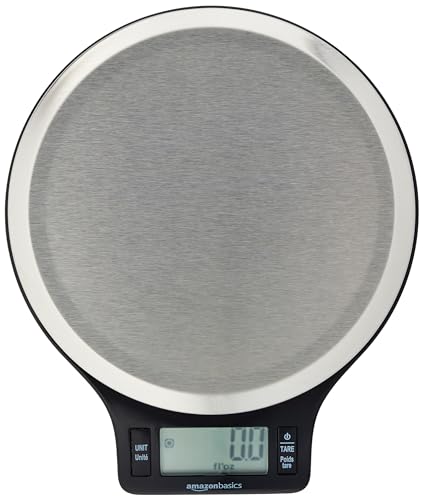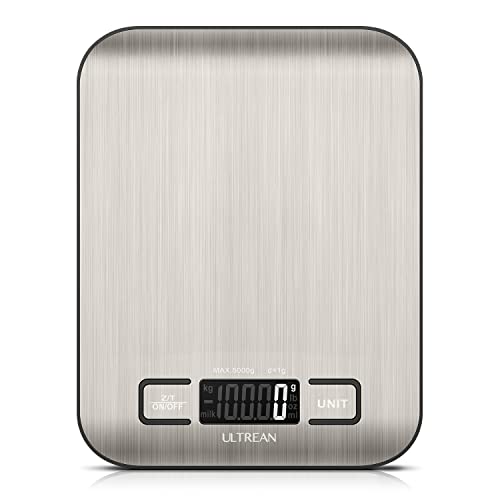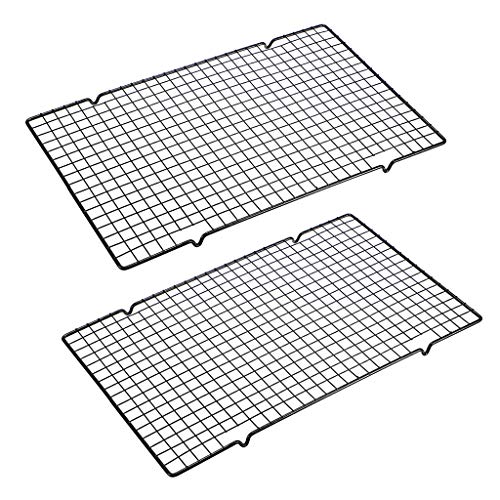
The idea of a baking frenzy is a set of baking rules to be followed that might initially be challenging but once mastered, will ensure that results are as expected. There are some things that experienced bakers take for granted, but a newbie might not know.
Baking Rules
1. Before beginning, thoroughly read the recipe.
Although you might roll your eyes at this instruction (“I have the ingredients, can’t I just follow the steps?”), I encourage you to follow it anyway.
Finding out too late that the sugar was supposed to be split into two steps or that your cookie dough needs to be refrigerated for two hours (and the cookies were supposed to be dinner-hey, these are unprecedented times) or the beans need to be soaked overnight.
You’ll also need a spice grinder. I think you get the idea.
2. Use a trusted source
Yes, you can find recipes for anything you want on a thousand different websites. However, just as with advice, you should believe the source when it comes to baking.
The ingredients should be listed in the recipe’s order of use. There will be a clear indication of whether an ingredient is required or not, and the oven temperature will be listed at the top to help you remember to preheat.
Given that not all ovens heat evenly, and that various people combine, whip, and stir differently, it will provide baking signs as well as time (until golden, until glossy, until doubled).
Furthermore, when I read online reviews, I don’t look for positive feedback because those are good indicators. Instead, I want to know if a lot of people have the same issues, such as ” muffins did not bake through, cake crumbled, brownies weren’t sliced,” which usually means I should pass.
3. Trust the indicators
The baking indications are back! Please don’t simply set your timer for the duration specified in the recipe and leave. Your oven, the type of pan you use, whether you use a tiny or large whisk, and the relative humidity can all afflict the outcome.
If you want soft peaks in your egg whites or a golden (as opposed to burnt) crust on your pie, you might need to beat the egg whites for longer than three minutes.
My timer is always set for 5-10 minutes less than the recommended cooking time for anything in the oven so I can check on it before it’s done.
The appeal of these visual cues is that they train your senses to detect when something is properly baked, ready to eat, or sufficiently risen to move on to the next phase.
Once you are confident in yourself, even if it takes an additional 10 minutes, you won’t remove the strawberry-rhubarb pie from the oven before the filling is bubbling.
Baking will begin to come naturally.
4. Use of ingredients at room temperature is not merely a suggestion
In many baking recipes, room temperature butter and eggs are required. There are so many instances when I’ve gone to make something and discovered my butter is fridge-hard (but there are workarounds!).
If you disregard these guidelines, your results may suffer. Although room temperature eggs will expand significantly more than cold ones, cold eggs from the fridge will separate more easily.
When butter and sugar are mixed together, room temperature butter will trap more air pockets, making your cake fluffier and your cookies less likely to spread out too much on the baking sheet.
When it comes to adding yeast, the yeast won’t bloom if the liquid isn’t warm, but really hot water can kill it.
5. Stay away from substitutes (seriously)
Every component in your recipe serves a specific function, such as the egg holding a batter together or the flour giving it structure.
Cooking allows for a certain amount of spontaneity that baking just does not allow for, such as substituting chicken for pork, adding more jalapenos, or omitting the fresh herbs you forgot to buy.
In baking, which is an exact science, the mixture of components interacts in particular ways. Fresh blueberries may taste excellent in a batter, but they also contribute moisture.
Different grades of chocolate behave differently when heated, and baking powder and baking soda are not interchangeable terms.
The total of a recipe’s ingredients adds up to success, just like in math. So don’t ruin your chances by winging it.
6. Bake on the center rack of the oven
It’s important to put the rack in the middle of the oven if you’ve only recently started baking or haven’t baked in a while.
Since it often gives the most equal heat, this is the norm for the majority of baking. Assume this is standard practice until a recipe clearly instructs you to change it.
When baking cookies, the low rack is far more likely to burn than the bottom rack, which is recommended for pizza crust because the heat for baking comes from the bottom element of your oven.
7. When baking, avoid doubling (or halving) recipes
You could be tempted to double your recipe if you enjoy freezing homemade treats for later use or if you’re baking for your family, friends, and neighbors.
While it will work for foods like soups, stews, and spaghetti sauce, it will ruin your baking. The proportions of baking soda and baking powder in any recipe don’t exactly scale up by two.
Things could go wrong since leavening depends on both ingredients. While using larger dishes can change baking times, it’s not always a good idea to double them.
Furthermore, if you’re only keeping count in your head, it’s incredibly simple to forget to double every component, even when you’re diligent.
When I double a recipe, I normally write down the new serving sizes on a piece of paper, start measuring, and mark each item off as I add it.
8. Take the time to learn how to measure correctly
A scale will go a long way toward ensuring that your baking is a success each and every time (see equipment suggestions below).
Using dry measures, have two people each measure one cup of flour for this entertaining quarantine exercise.
Then, weigh each person’s scoop (or just dump them out side by side). The volumes are so drastically different that you could be astonished.
A pie crust that won’t hold together or is too tough can be the result of using too much flour. It can also make cakes and biscuits that are dry and crumbly. In essence, measuring your flour improperly can undo all of your previous efforts.
Here is how to measure flour accurately without a scale:
Your baking will be a lot easier if you have a scale (see tool tips below).
Using dry measures, have two people measure 1 cup of flour each, then weigh their scoops (or just dump them next to each other). It might surprise you how different the volumes are.
Cakes and cookies made with too much flour will be dry and crumbly, and pie crusts won’t hold together. You can ruin all your efforts by simply measuring your flour incorrectly.
You can measure flour even without a scale by following these steps:
Use dry measuring cups instead of wet measuring cups (like the Pyrex measuring cup we all grew up with). Dry measures have a specific capacity, and you fill them as full as possible, then level them off.
Scoop and scoop: Use a fork to stir up the flour in the bag or container you’re measuring from so it doesn’t compact.
By sweeping your knife over the edges of the cup, level off the top of the dry measure by spooning flour into it (don’t pack it).
Note for brown sugar: When brown sugar is measured in a recipe, it assumes you are packing the sugar into the measuring spoon.
9. Check your yeast.
The shelf life of yeast is three to six months. In the last few months, if you’ve been baking like a madman, you need to ensure your yeast is capable of delivering fluffy, airy carbs.
To 1/2 cup warm water, add a single pack of yeast (or 2 1/4 teaspoons) and 1 tsp sugar. Water should be about 115F, or very warm, but not so hot that you can’t hold your fingers in it.
Give it a few minutes to sit. Within 5-10 minutes, the mixture should bubble and smell yeasty. You need to make a new batch if it doesn’t.
You can store yeast in the fridge or even the freezer to extend its shelf life. (Don’t worry, you can bake with it right away.)
10. Invest in these three tools
Scale
While some recipes only provide measurements in cups and teaspoons, many will also provide weights (or look for a cookbook that does).
The first advantage of using a scale (prices start at about $20) is that your ingredients will be accurate to the gram. (You won’t have to guess what “loosely packed” really means.)
In addition, using a scale saves you time and effort when cleaning up. Everything can be measured in one bowl (aside from separating dry and wet ingredients, as per the recipe), and you don’t need several measuring spoons or cups.
Oven thermometer
Because oven temperatures vary, the accuracy of the built-in sensor may not be perfect. To find out how hot your oven is, you can buy an oven thermometer (which costs around $10).
There is a possibility that a 25-degree temperature differential can affect the results of your baking. In order to reach 350F, some ovens require you to set the temperature to 360F.
In addition, your oven might take longer to preheat than you expected; for example, one editor of Chatelaine’s oven barely reached 350F 20 minutes after it beeped “ready.”
Cooling Rack
With a non-stick cooling rack (under $10), you’re on your way to success. If you’re baking cookies, a burnt cake, or banana bread, a cooling rack allows steam and heat to escape from beneath, as well as from the sides and top.
It is possible to create sogginess or soften crispness when trapped heat or steam is present. In addition, leaving cookies on a hot baking sheet can overcook them.
11. A recipe that says “allow to cool” has a good reason
Before slicing or removing the dish from the pan, many baking instructions will instruct you to wait until it has cooled (and always before icing).
You should be aware that your baking is still cooling down; removing it too early could result in tearing or leaving a 1-inch layer on the bottom.
If you are so close to double chocolate brownie heaven, it may be difficult to resist this seemingly tedious process when you are so close to double chocolate brownie heaven.
Once cooled, brownies, zucchini bread, or chocolate cake will cut more easily.
Furthermore, as bread or rolls cool, steam is released, completing the baking process.
Even though warm bread is delicious, its structure and flavor improve as it cools, and room temperature bread is easier to slice
12. Follow the recipe’s instructions regarding the size of your baking dish
Upon reading your recipe, you discover that your reliable loaf pan is larger than the one the recipe calls for. As the batter is spread over a larger surface area, it will bake more quickly, affecting the cooking time (or vice versa if using a smaller dish).
In either case, I usually shave off 10 minutes from the cooking time and check the loaf or cake to see if it’s done and/or baked evenly.
For beginners, it’s best to find recipes that work with their kitchenware. Choose a Nanaimo bar recipe that uses an 8″ pan instead of converting one to fit a 9″ pan.
13. “1 cup chopped walnuts” is not the same as “1 cup walnuts, chopped”
Make sure you read ingredient measurements correctly. The first example requires you to chop enough walnuts to measure 1 cup.
Using the second example, you measure one cup of whole walnuts and then chop them. Anything after the comma is done AFTER the ingredients are measured (in the first example).
Can I freeze my baked goods?
In case you’re a household of one or two and enjoy baking, many baked goods can be frozen.
Breads:
Once cooled, bread, buns, and focaccia freeze well if you’ve been practicing your sourdough skills. They will remain fresh when defrosted. Wrapping frozen bread in foil-which I reuse-and warming it in a 300F oven until soft is my usual method. Slice your bread before freezing, then pull out slices as needed.
Loaves:
Banana, pumpkin, and carrot quick breads (frozen quick) can be sliced and frozen for individual snacks. Bake an extra batch of pancakes, crepes, or waffles and freeze the second half. (Ensure that anything you are freezing has cooled completely before freezing.)
Freeze before baking:
Tip: Freezing Individual portions
Freeze individual servings (like scones) on a baking sheet until solid. After that, place them in a freezer bag or container and store them (otherwise they will all freeze together).
14. Do not measure above the basin.
Not just me curses (and even sobs) after measuring vanilla extract or oil over a bowl and pouring it way too quickly and ruining a batter.
Last update on 2024-07-26 / Affiliate links / Images from Amazon Product Advertising API































